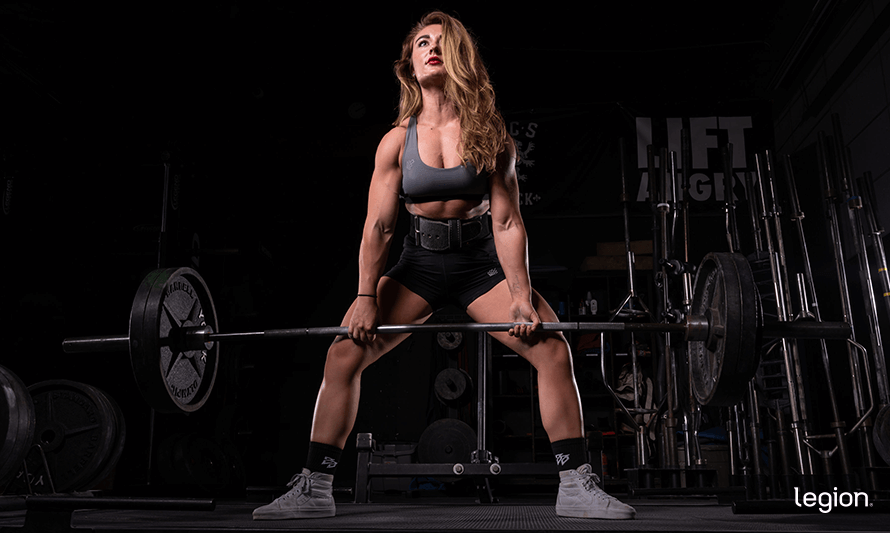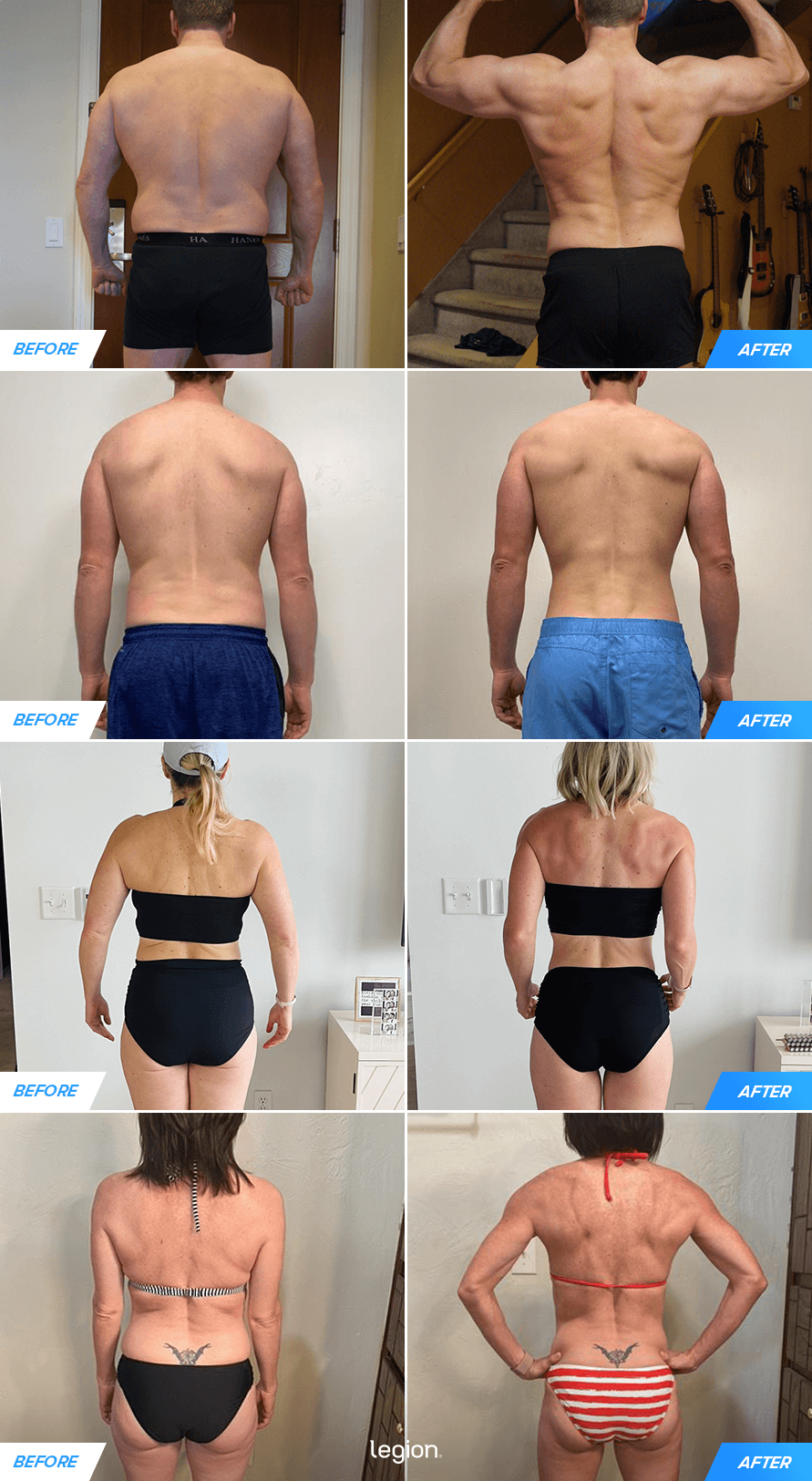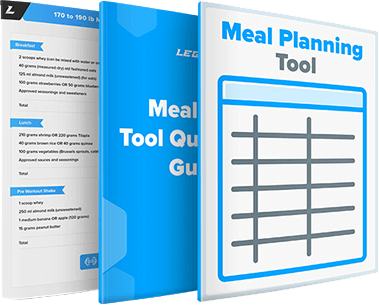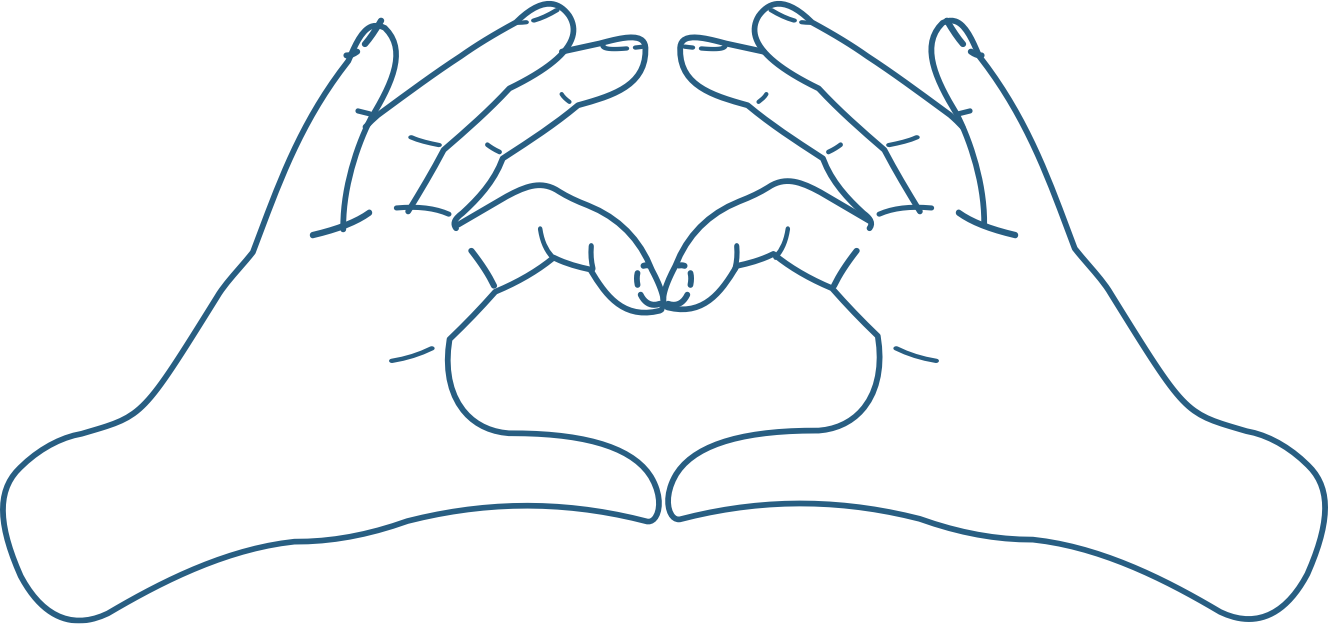
Do I want to deadlift today? No. Is that a reason to not deadlift today? No.
Every gymgoer has had that internal argument. Deadlifts are uniquely intimidating. You know they build strength and muscle—but the moment you walk up to the bar, your brain starts inventing excuses.
A big part of that hesitation comes from confusion about how much deadlifting you’re supposed to do. Typically, you’ll hear two opposite stories:
- Strength athletes and powerlifters tell you to pile on the volume—heavy singles, doubles, and triples, often multiple days per week.
- Others insist deadlifts are so demanding you should barely do them at all—one set, once in a blue moon, anything more is “overtraining.”
And when those extremes collide online, the space between becomes a mess of contradictory advice:
Do three sets? Five? Ten? Once per week? Twice? Low reps? High reps?
Everyone has an opinion, and almost none of them agree.
Here’s the truth: You don’t need heroic volumes or complicated programming, but you also don’t need to treat deadlifts like radioactive waste. The right amount is somewhere in the middle—and surprisingly simple.
This article shows you exactly how many sets and reps of deadlifts to do based on your goal, how often to deadlift, and how to adjust as you get stronger.
Key Takeaways
- Most people only need 3–5 hard sets of deadlifts once per week to build strength and muscle.
- Your rep range should match your goal—low reps for strength and power, moderate reps for muscle growth, higher reps for endurance.
- Beginners progress best with just a few moderate-rep sets; extra volume mostly adds fatigue, not results.
- Deadlifts in the 4–6 or 6–8 rep range are the most efficient and sustainable way to build muscle without grinding yourself into the ground.
- If deadlifts stop progressing or feel unusually hard, take a deload and reassess.
Table of Contents
+
How Many Sets of Deadlifts Should I Do? (Quick Answer)

For most gymgoers, 3–5 hard sets of deadlifts once per week works well.
“Hard sets” here means sets taken 1–2 reps shy of “failure”—the point at which you can’t perform another rep with good form despite giving maximum effort.
Here’s how that looks when you factor in your main goal and rep range:
Recommended Deadlift Sets & Reps by Goal
| Goal | Hard Sets/Workout | Rep Range |
|---|---|---|
| General strength/hypertrophy | 3 | 4–6 or 6–8 |
| Maximal strength | 3–5 | 1–5 |
| Endurance/conditioning | 3 | 15–20 |
| Power | 3–5 | 1–3 |

Is It Okay to Deadlift Just Once per Week?
Yes—for most weightlifters, one deadlift workout per week is ideal.
Even many competitive powerlifters only train their “competition” deadlift once every seven days. Heavy deadlifts are demanding, so doing them more often can eat into your recovery, drag down performance, and make nagging aches and pains more likely.
That doesn’t mean you should only do “hip-dominant exercises” once per week. Most well-designed programs also include at least one deadlift variation—Romanian deadlifts, rack pulls, and so on.
These exercises are easier to recover from but still train the same muscles, so they let you rack up more quality reps without the same systemic fatigue, as long as you keep the overall volume (sets) and intensity (effort) sensible.
How to Choose Your Deadlift Sets and Reps by Goal

Here’s a simple way to decide how many sets and reps of deadlifts you should do, based on what you want to achieve.
Deadlift Sets and Reps for Beginners
If you’re new to strength training (less than one year of training experience), do 3 sets of 4–6 reps of the deadlift once per week.
This is enough to build strength and muscle without overwhelming your recovery.
Beginners don’t need much deadlift volume to progress—your body responds extremely well to small amounts of high-quality work. Adding more sets usually just adds more fatigue, not better results.
Deadlift Sets and Reps for Maximum Strength
To build maximal strength, do 3–5 sets of 1–5 reps once per week.
Research shows that training with heavier loads produces superior one-rep-max strength gains compared to lighter loads, so most of your deadlifting should live in the 1–5 rep range.
When you’re newer to strength-focused training, 3 hard sets per week is usually enough. As you get stronger and more experienced—and as progress slows—you may need 4–5 hard sets to keep the needle moving.
Deadlift Sets and Reps for Muscle Growth (Hypertrophy)
To build muscle, do 3 sets of 4–6 or 6–8 reps once per week.
Studies show you can grow muscle across a wide range of rep schemes as long as you train close to failure and accumulate enough quality sets. But with deadlifts reps, there’s a practical advantage to staying in moderate ranges:
- You can add weight to the bar more regularly, which is vital for muscle and strength gain.
- Heavier, lower-rep sets feel less fatiguing than very high-rep deadlift sets, which helps keep the rest of your workout productive.
- Moderate reps are more time-efficient. High-rep deadlift sets require much longer rest due to cardiovascular fatigue, which drags out your training sessions.
In short, moderate rep ranges let you train hard, progress steadily, and recover well—all of which matter for long-term muscle gain.
Some “gurus” say these ranges are too low to maximize muscle growth. But having worked with thousands of people through Bigger Learner Stronger, Thinner Leaner Stronger and Legion’s body transformation coaching, I’ve consistently found that doing lower-rep deadlifting produces the best results.
And if you’d like proof, here are a few coaching clients who made outstanding back gains in just a few months using this exact approach:

Deadlift Sets and Reps for Endurance and Conditioning
To build endurance and conditioning, do 3 sets of 15–20 reps once per week. Training in this range seems to be slightly better than other rep ranges for developing muscular endurance, especially when the lower body is involved.
Deadlift Sets and Reps for Power and Speed
To develop power, do 3–5 sets of 1–3 explosive reps with 30–70% of your one-rep max. These sets should be fast and crisp—not grinders.
The goal is to practice accelerating the bar with perfect form, so the moment your speed slows or your technique changes, the set is over. Training this way boosts your rate of force development without adding much fatigue.
How to Adjust Deadlift Sets and Reps Over Time

Choosing the right number of deadlift sets and reps gets you moving in the right direction—but eventually you’ll need to adjust your training to keep making progress. How you do that depends on your experience level, how quickly you’re gaining strength, and how well you’re recovering between workouts.
Here’s how to evolve your deadlift programming over time so you keep getting stronger without beating yourself into the ground.
Progressing Deadlift Sets and Reps as You Get Stronger
There are countless ways to periodize deadlift training, but most people don’t need anything fancy—especially early on. If you’re a beginner, simple double progression works extremely well.
Here’s how it works:
- If your workout calls for 4–6 reps, and you complete 6 reps in a set with good form, increase the weight by 10 pounds for your next set.
- If you do 3 reps or fewer in subsequent sets, reduce the load by 5 pounds to stay in the 4–6 rep range.
This approach gives you a built-in progression plan that’s simple to follow and ensures you’re always training hard enough to improve. It’s the exact progression style used in programs like Bigger Leaner Stronger because it works reliably for anyone building their first foundation of strength.
If you prefer something more structured, beginner programs like Starting Strength or StrongLifts 5×5 are also excellent options. They use predictable weight increases and consistent rep schemes to keep you moving forward without overthinking your training.
Once you’ve been lifting for a year or two and you’re no longer adding weight week to week, you’ll likely need more sophisticated programming. At this stage, your body adapts more slowly, and progress depends on carefully controlling volume and intensity.
Some effective intermediate options include:
These programs introduce planned phases of heavier and lighter lifting to help you keep progressing long after the newbie gains have faded.
Signs You’re Doing Too Many Deadlift Sets
If you’re . . .
- Not progressing over time
- Feeling unusually beat up or achy
- Struggling with motivation
. . . you’re probably doing too much deadlifting and it might be time to deload. To learn how, check out this article:
How to Deload: A Guide to Deload Weeks to Gain Muscle & Strength
If you come back and still feel flat or achy, reduce your overall deadlift volume for a few weeks. That might mean dropping from 4–5 sets down to 3 weekly hard sets, which is about as low as you should go to maintain muscle, strength, and solid technique.
The goal isn’t to suffer through more deadlifts—it’s to train at the level that keeps you progressing consistently.
The Bottom Line on How Many Sets of Deadlifts You Should Do
There’s no single perfect number of deadlift sets or reps that works for everyone, all the time—but there is a sweet spot where most people get stronger, build muscle, and stay injury-free without burying themselves in fatigue.
For the vast majority of lifters, that sweet spot is 3–5 hard sets of deadlifts once per week. After that, your exact set and rep scheme should match your main goal:
- Beginners do best with 3 sets of 4–6 reps to build skill, strength, and muscle without overwhelming their recovery.
- Strength-focused lifters progress fastest with 3–5 sets of 1–5 reps, using heavier loads.
- Hypertrophy-focused lifters grow well with 3 sets of 4–6 or 6–8 reps, which offer the best blend of stimulus, performance, and recoverability.
- Endurance and conditioning work belongs in the 15–20-rep range with lighter weights.
- Power training works best with 3–5 sets of 1–3 explosive reps using submaximal loads.
As your experience grows, you’ll fine-tune volume and intensity based on progress, recovery, and how your body responds. Add sets when you’re progressing smoothly, pull back when you feel run down, and use deadlift variations to increase volume without piling on fatigue.
If you follow these principles—and adjust conservatively as you get stronger—you’ll keep adding weight to the bar, building muscle, and making steady progress for years to come.
FAQ #1: How many reps and sets of deadlifts should I do?
It depends on your goals. Here are some rules of thumb:
- Beginners: 3 sets of 4–6 reps
- Strength-focused lifters: 3–5 sets of 1–5 reps
- Hypertrophy-focused lifters: 3 sets of 4–6 or 6–8 reps
- Endurance-focused lifters: 3 sets of 15–20 reps
- Power-focused lifters: 3–5 sets of 1–3 explosive reps with 30–5-% of one-rep max
FAQ #2: Is 5×5 too much for a deadlift?
It depends on what you’re trying to achieve. A 5×5 setup isn’t unusual for certain powerlifting programs or deadlift specialization routines, but for most everyday gymgoers who want to gain muscle and strength without excessive fatigue, it’s usually more volume than they need.
Most people progress better with 3 hard sets instead of 5.
FAQ #3: How many times per week should I deadlift?
For almost everyone, deadlifting once per week is enough. Deadlifts are taxing, and most lifters recover and progress best when they deadlift in one workout weekly, then do a lighter deadlift variation elsewhere in their program.
FAQ #4: How many deadlifts should a beginner do in one workout?
To build a foundation of strength, beginners do best with 3 sets of 4–6 or 6–8 reps. This gives you enough quality practice to learn the movement, get stronger, and build muscle without piling on unnecessary fatigue.
FAQ #5: Are high-rep deadlifts safe?
Yes—as long as you maintain good form, choose an appropriate load, and stop the set if your form begins to slip.
Want More Content Like This?
Check out these articles:
- Is the Deadlift a Back or Leg Exercise?
- 15 Best Deadlift Variations to Build Muscle and Strength
- The Deadlift and Your Lower Back: Harmful or Helpful?
- Deadlift vs. Squat: Which Is Best for Size and Strength?
- The Best Deadlift Accessory Exercises to Boost Pulling Power
Scientific References +
- Refalo, Martin C., et al. “Influence of Resistance Training Load on Measures of Skeletal Muscle Hypertrophy and Improvements in Maximal Strength and Neuromuscular Task Performance: A Systematic Review and Meta-Analysis.” Journal of Sports Sciences, vol. 39, no. 15, 19 Apr. 2021, pp. 1–23, https://doi.org/10.1080/02640414.2021.1898094.
- Schoenfeld, Brad J., et al. “Effects of Low- vs. High-Load Resistance Training on Muscle Strength and Hypertrophy in Well-Trained Men.” Journal of Strength and Conditioning Research, vol. 29, no. 10, Oct. 2015, pp. 2954–2963, pubmed.ncbi.nlm.nih.gov/25853914/, https://doi.org/10.1519/jsc.0000000000000958.
- Baz-Valle, Eneko, et al. “Total Number of Sets as a Training Volume Quantification Method for Muscle Hypertrophy.” Journal of Strength and Conditioning Research, vol. Publish Ahead of Print, no. 3, 30 July 2018, https://doi.org/10.1519/jsc.0000000000002776.
- Schoenfeld, Brad J., et al. “Loading Recommendations for Muscle Strength, Hypertrophy, and Local Endurance: A Re-Examination of the Repetition Continuum.” Sports, vol. 9, no. 2, 22 Feb. 2021, p. 32, pmc.ncbi.nlm.nih.gov/articles/PMC7927075/, https://doi.org/10.3390/sports9020032.
- Miller, Ryan M., et al. “Maximal Power Production as a Function of Sex and Training Status.” Biology of Sport, vol. 36, no. 1, 2019, pp. 31–37, https://doi.org/10.5114/biolsport.2018.78904. Accessed 4 June 2020.
- “September 2019 - Volume 33 - Issue 9 : The Journal of Strength & Conditioning Research.” Lww.com, 2019, journals.lww.com/nsca-jscr/fulltext/2019/09000/. Accessed 19 Nov. 2025.










